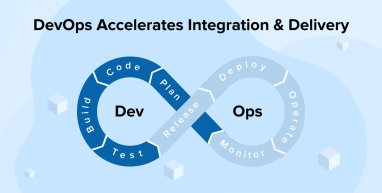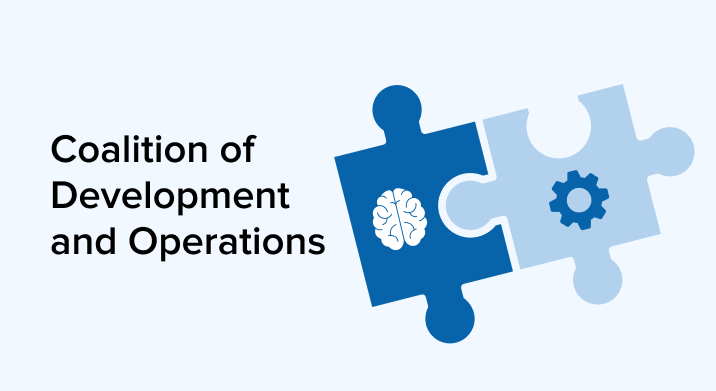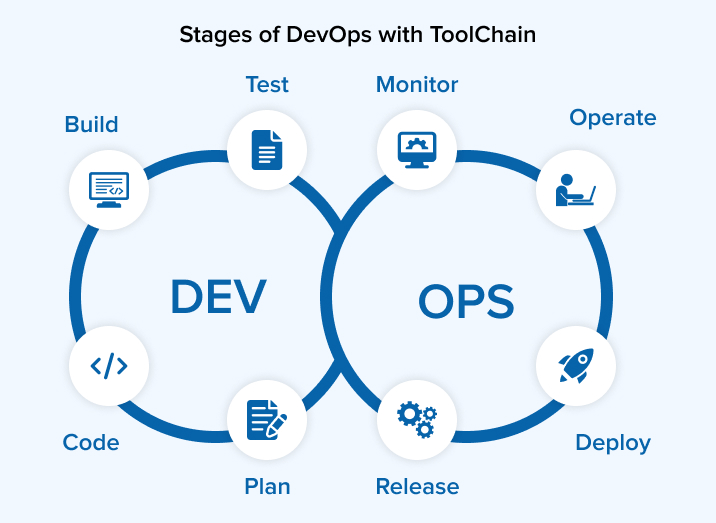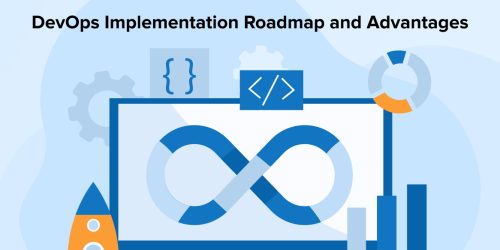Related Blogs

Consolidation of agile, continuous integration and delivery, excellent collaboration and stronger integration all together define “DevOps” methodology. DevOps basically breaks the barriers between software development team and operation team as it is an isolation of automated processes.
Overcoming the stumbling block of Agile and Waterfall software development model, DevOps emerged as a boon for custom software development company, with the help of its – build, test and release became faster, efficient and reliable. DevOps extensive automated features let IT teams provide higher values and standards to businesses of any fields and end users with swift booming updates and services.

Right from software integration, testing, to deployment is automated in DevOps. It mainly focuses to create an environment where software development, project management, and operations specialists can communicate and collaborate mutually for building, testing and releasing software.
Till 2016, about 74% of enterprises and Software Development Company adopted DevOps methodology for development, management and delivery of any application. Day-by-day DevOps embracing digits are escalating. Have a look on set of DevOps practices.
1. DevOps Core Practices
Let’s explore a few core best practices of DevOps for smoorth integration adn delivery.
1.1 Continuous Integration
In continuous integration, developer conglomerate their code upgradation into central repository and then automated builds and tests are run. Key intentions are to discover and address bugs faster, enhance software quality, and lessen the time in validation and instant new updates.
1.2 Continuous Delivery
Continuous delivery, interconnected to continuous integration, is a process where code upgradations are automatically built, tested and fixed for production release. If bugs are found while testing, bugs are notified. After complete continuous delivery – by implementing standardized test process, software developers get a build ready for deployment.
1.3 Microservices
Microservices is similar to HTTP based API (Application Programming Interface). Microservices, a lightweight mechanism, is scoped for a single purpose or a group of services or functionality which is implemented and deployed independently without any major changes in existing solution.
1.4 Infrastructure as Code
Infrastructure as code can be used remotely by both – developers and system administrators. The servers and infrastructure can be deployed quickly along with latest patches and versions. As codified with the cloud, infrastructure can be tracked, validated and reconfigured automatically.
1.5 Monitoring & Logging
Monitoring and logging are captured, categorized and analyzed for viewing the impact of changes or updates on product’s end users. Alerts, logs and real-time monitoring help in proactively keeping an eye on insights of issues.
1.6 Communication & Collaboration
DevOps tools cater sharing facility and chat facility, where developer and operation time can instantly communicate and discuss issues or track the system. Also, it let all the working resources are closely aligned on the project.
2. Stages of DevOps with ToolChain
DevOps is a continuous process where after monitoring, with new update again work starts from Plan immediately. Below is mentioned the toolchain of the DevOps ecosystem – combination of the tools used by Developers and Operation administrators, along with the well-known tools for each stages.

2.1 Plan
Unification of IT personnel is involved in plan stage to discuss about requirements, release metrics, business case, security policies, production metrics, gather information about business verticals and feedbacks. Notable solutions that aid Plan are JIRA, HipChat, Slack, Confluence, iRise.
2.2 Code
Composing the build, designing the software, coding and configuring with quality performance are all covered in Code stage. Solution providers are Microsoft Visual Studio, Bitbucket, GitHub, Electric Cloud, SVN, Eclipse.
2.3 Build
Build stage covers up with the continuous integration practice. In this stage, developers upload their code to the repository where the code is automatically integrated. Distinguished tools include Grunt, Microsoft Visual Studio, Maven, Gradle.
2.4 Test
Verifying performance and vulnerability, performing acceptance, regression and configuration testing to examine the performance of the product, services and activities are designed as per the requirement. Tools used for testing or verification are NUnit, Munit, Telerik, Runscope, Blazemeter, jMeter, Selenium, Webdriver.
2.5 Release
Activities covered in Release are triggering release, release coordination, release staging and holding, scheduling releases, fallbacks and recoveries. Solutions include AWS, Azure (cloud), Jenkins, Docker containers, Puppet, BMC Software. All the solutions come with the functionality of automated release, deployment and release.
2.6 Deploy
Deploy is the stage where the build is placed in production and is further tested by project team. After it passes through each test, it is confirmed that targeted requirement is accomplished appropriately. With continuous integration, software developers can also do continuous deployment of a chunk of updates. Solutions include AWS, TFS.
2.7 Operate
Deployment is not the end, operate/ configure is the important stage then after for support and maintenance. Operate activities includes configuring, network provisioning, infrastructure storage and much more. Tools included are Splunk, New Relic, Ansible, Chef, Salt, Otter.
2.8 Monitor
In this stage, Software Development Company monitors specific issues after releases and its impact on end-users. It also includes production metrics and statistics. It helps in new release cycles and plans activities. Solutions are BigPanda, Ganglia, New Relic, Wireshark.
3. Conclusion
In perspective of developers and operations team, DevOps is a set of principles and practices which are followed by both teams together to provide instant updates to the client along with high-quality delivery. It renders competitive advantages like the time to market is lessened and faster and efficient end-to-end delivery with agility towards change and automated advanced processes and tools.

Vishal Shah
Vishal Shah has an extensive understanding of multiple application development frameworks and holds an upper hand with newer trends in order to strive and thrive in the dynamic market. He has nurtured his managerial growth in both technical and business aspects and gives his expertise through his blog posts.
Related Service
Clouds and DevOps
Know more about Cloud and DevOps services
Learn moreAbout Clouds and DevOpsSubscribe to our Newsletter
Signup for our newsletter and join 2700+ global business executives and technology experts to receive handpicked industry insights and latest news
Build your Team
Want to Hire Skilled Developers?





Comments
Leave a message...